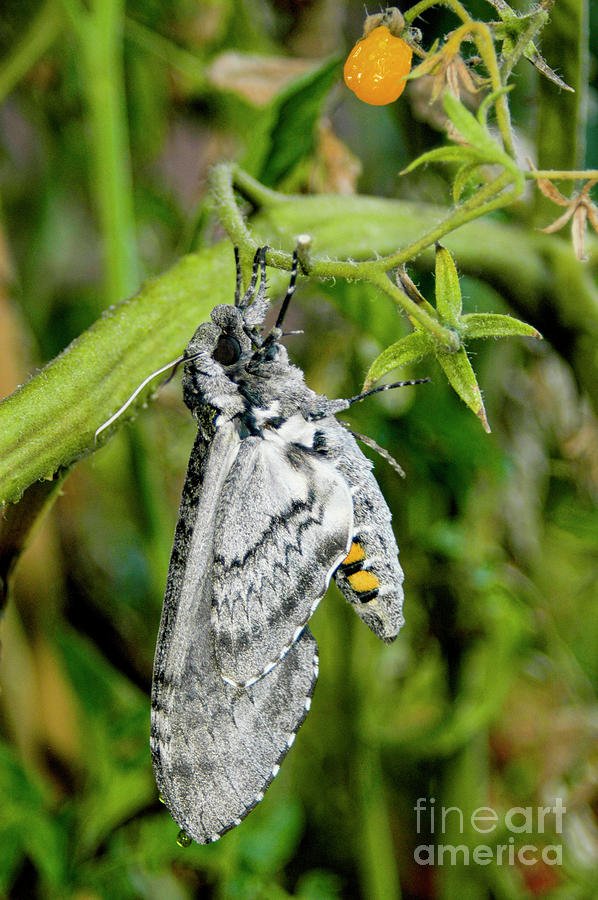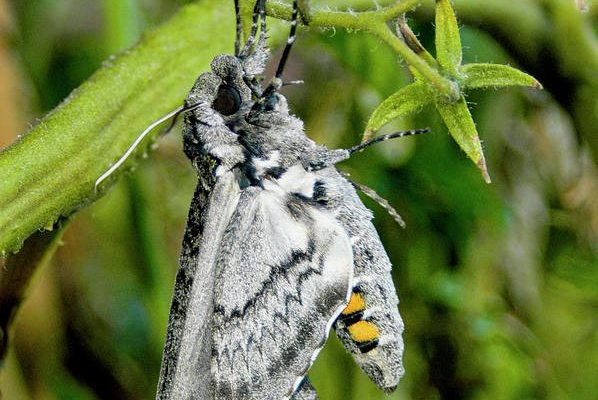
Think of hornworms as the caterpillar stage of specific moths. They’re destined to become beautiful creatures fluttering around at night. If you’ve ever seen a hornworm in your garden and wondered what happens next, you’re in the right place. Let me explain how these transformations work and introduce you to the common moths that emerge from hornworms.
What Are Hornworms?
Hornworms are the larvae of moths, primarily **spicebush swallowtail** and **tobacco hornworm** moths. They’re massive caterpillars, often reaching up to 4 inches in length. You might spot them hanging out on your tomato, pepper, or eggplant plants, often camouflaging themselves against the foliage.
The reason they’re called “hornworms” comes from a little horn-like protrusion on their rear end. It’s just one of their many adaptations for evading predators. These little guys can quickly devastate a garden if left unchecked! So, even though they might be a pest, their story doesn’t end there.
Once hornworms reach maturity, they enter a lovely cocoon phase, ultimately transforming into moths. Understanding their life cycle is crucial for gardeners—after all, knowing what these pests can turn into adds a little depth to your garden drama.
Spicebush Swallowtail Moth
Among the most common moths that emerge from hornworms is the **spicebush swallowtail moth**. These beauties are known for their striking blue and black wing patterns. They’re not just pretty, though; they play an essential role in the ecosystem as pollinators.
After the hornworm pupates, it turns into a beautiful moth that typically emerges in late summer. The adult moth typically has a wingspan of about 3 inches. Spicebush swallowtails are unique because their caterpillars can mimic the look of bird droppings, which helps them avoid being eaten. Clever, right?
You might spot them flitting around gardens or near spicebush plants, their namesake. Their lifecycle takes about 10 days, and they’re known for their graceful flight patterns. If you see one, take a moment to enjoy its beauty—it’s nature’s way of reminding us that even pests have their charm!
Tobacco Hornworm Moth
The **tobacco hornworm moth**—also known as the five-spotted hawk moth—gives another twist to the story of hornworms. These moths are larger than the spicebush swallowtails, with a wingspan that can stretch up to 4.5 inches. Their wings are primarily brown with some pink, green, and white markings that make them quite eye-catching.
After incubating in the soil for a while as a pupa, these moths emerge typically in the late evening, just as dusk sets in. Their nocturnal nature allows them to evade many predators and thrive in their environments. They primarily feed on nectar, which makes them essential for pollination, much like their spicebush cousins.
If you’re dealing with hornworms in your garden, chances are good that you’re looking at future tobacco hornworm moths. While they can wreak havoc on your plants, the transformation into beautiful moths adds an interesting layer to their story.
Other Moths and Their Hornworm Connections
While the spicebush and tobacco hornworms are the most discussed, other less common moths also share a connection with hornworms. For example:
- Granulate Cutworm Moth: Known for its smooth, drab appearance, this moth has hornworm caterpillars that can be found lurking on various plants.
- Black Witch Moth: This moth also has caterpillars that can resemble hornworms and can be seen in areas with rich vegetation.
These moths, while perhaps not as famous, also emerge from hornworms and have their place in the ecosystem. Each species contributes uniquely to its surroundings, so even the lesser-known moths play a critical role.
Life Cycle of a Hornworm
Understanding the **life cycle of a hornworm** helps unravel the mystery behind their transition into moths. It begins with the egg stage, where female moths lay their eggs on the host plants—usually the ones the caterpillars will later munch on.
Once the eggs hatch, the tiny caterpillars emerge, ready to feast. This part of their life involves rapid growth, where they voraciously consume leaves. After about two weeks, they’re large enough to seek a suitable spot in the ground to pupate.
During this pupation phase, they’re hidden away, transforming into moths. This transition can take anywhere from one to three weeks, depending on environmental conditions. All of this makes the lifecycle of hornworms fascinating—it’s like a secret drama unfolding in your garden.
Why These Moths Matter
You might be wondering, why does it matter what moths come from hornworms? Well, their existence positively impacts our ecosystem in several ways.
First off, both the spicebush and tobacco hornworm moths are **pollinators**. They help plants produce fruits and seeds, which are essential for the health of ecosystems and human agriculture. By supporting plant life, they indirectly support various bird and insect species that rely on those plants for food and habitat.
Furthermore, these moths offer us a glimpse into the complexity of nature. They remind us that even the most bothersome pests serve a purpose. Understanding these connections can help us appreciate the dynamics of our gardens and encourage us to find balanced ways to manage them.
Managing Hornworms in Your Garden
If you find hornworms munching away in your garden, you might feel a mix of frustration and curiosity. How do you deal with them while also respecting their role in nature? Here are some tips to manage hornworms while maintaining balance:
1. **Manual Removal:** One straightforward method is to handpick the hornworms off your plants. Wearing gloves can make this task easier, as hornworms can be squishy! Just make sure to dispose of them far from your garden.
2. **Natural Predators:** Encourage natural predators, like birds and beneficial insects, to thrive in your backyard. Planting flowering plants can attract these helpful species, creating a natural balance.
3. **Organic Pesticides:** If infestations become overwhelming, consider organic options like Bacillus thuringiensis (Bt). It’s a natural bacterium that targets caterpillars without harming beneficial insects.
4. **Companion Planting:** Some plants, such as marigolds, can deter hornworms while attracting pollinators. Planting these can create a buffer for your veggies.
By managing hornworms thoughtfully, you can protect your plants while allowing nature to play its course.
Understanding the connection between hornworms and their eventual transformation into stunning moths adds a layer of intrigue to your gardening experience. From the vibrant spicebush swallowtail to the elegant tobacco hornworm moth, there’s much to appreciate in their lifecycle.
These moths teach us valuable lessons about nature’s interconnectedness and the balance of ecosystems. So, next time you see a hornworm on your plants, remember—it’s not just a pest; it’s part of a larger story in the circle of life. Gardening isn’t just about controlling pests; it’s about embracing the beauty and complexity of nature. Happy gardening!

